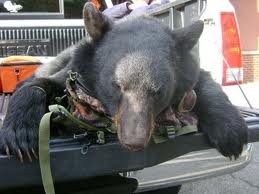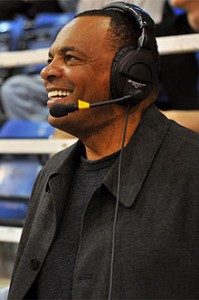 A slow start for Moneyball, NBA style.
A slow start for Moneyball, NBA style.
With 34-year-old Grizzlies owner Robert Pera shocked – shocked! – to learn the team he paid $377 million for in June was in financial peril, they began shopping Rudy Gay, even if moving him would break up the group that had risen from No. 15-14-11 finishes from 2007-2009 to within one win of the Western Conference finals in 2010.
Alarmed by the reaction by fans, the press and coach Lionel Hollins, they slipped under the tax threshold the easy way, dumping reserves Wayne Ellington, Marreese Speights and Josh Selby.
But last week, when the danger seemed past, they traded Gay, too, for the low, low bargain price of Tayshaun Prince and Ed Davis.
With their whole-hearted commitment to the new hoop math, GM Chris Wallace, who pulled off the miracle of putting together the solid core Pera purchased, remains in titular control but is expected to be pensioned off after the season.
The real power broker is former agent Jason Levien, whose first move was to hire ESPN stat maven John Hollinger, making them the NBA’s version of the Oakland A’s in “Moneyball,” the book that started the math geeks’ revolution in sports.
Personally, I’m fascinated, having always liked to use numbers before “analysis” was expanded to include models like Hollinger’s Player Efficiency Rating, which even GMs have come to quote.
I couldn’t figure out what PER told you with JaVale McGee No. 9 and Joakim Noah at No. 65 in December, when John was gracious enough to do a SheridanHoops Radio show with me co-hosting and Ric Bucher, another ESPN expat, joining as a guest.
“At the defensive end, we have stats for blocks, steals and fouls. And that’s like one-fifth of defensive plays, and the other 80 percent gets swept under the rug,” said Hollinger. “So you go with a lot of this, especially with the bigs, and in particular [with] ones who aren’t good defensive players but who get a lot of blocks anyway. …
“That would be where I would say we just don’t have the numbers as a sport to go any further than that. So that’s just understanding what PER’s limitations are. It’s kind of like how batting average didn’t tell you anything about a guy’s glove. It doesn’t make it worthless. You just have to know what it’s describing.”
Personally, my conclusion would be if we don’t have have good metrics, we shouldn’t try to evaluate defense as part of what’s supposed to be a one-model-measures-everyone rating.
Unfortunately, the Gay trade has become somewhat of a stats-vs.-old school issue, with the stat guys swallowing the Pera financial-ruin explanation whole to defend Hollinger.
Since ESPN is the leading, uh, think tank for the promotion of newfangled statistical analysis – they provide instant takes, filling up the infinite news hole – it wasn’t surprising to see Truehoop’s Henry Abbott note, “Ed Davis is making 78 percent of his shots at the rim, which is a mighty number, tying LeBron James.”
Hey, I love Ed Davis. But what if the opponents don’t get out of the way so he can get to the rim?
James can get there on his own. Davis needed three seasons and injuries to Andrea Bargnani and Jonas Valanciunas to become a starter, so it isn’t a valid comparison.
However, this one isn’t on Hollinger. The Grizzlies didn’t sell Gay down the river because he has an indifferent PER ranking – No. 154, to Prince’s No. 193 and Davis’ No. 59.
 This decision wasn’t driven by numbers but by Pera’s directive to make the best deal they could for financial reasons.
This decision wasn’t driven by numbers but by Pera’s directive to make the best deal they could for financial reasons.
Those reasons have more to do with Pera than the team. His company, Ubiquiti, peaked at $35 a share in May, then was trading below $15, halving his $1.5 billion fortune.
Otherwise, Pera made a horrific deal for the team Michael Heisley bought for $160 million in 2001 and had tried to unload since 2006, when Christian Laettner’s group turned out not to have the $252 million it offered.
Heisley had already made off with everything Memphis offered to move from Vancouver, including $60 million for naming rights to the FedEx Forum.
If everyone knows the tiny market is a problem, why did Pera guarantee he would stay 15 more seasons?
The problem now is intangible, non-measurable but impossible to miss: What happens when you fix something that’s not broken?
 Hollins is making no secret of his alienation in the new order, noting he has barely met Pera. “He was at our opening game and I tapped him on the shoulder and introduced myself, but we didn’t talk,” the coach said. “It is what it is when it comes with changes of ownership.”
Hollins is making no secret of his alienation in the new order, noting he has barely met Pera. “He was at our opening game and I tapped him on the shoulder and introduced myself, but we didn’t talk,” the coach said. “It is what it is when it comes with changes of ownership.”
When Hollinger was hired, Hollins noted, “We get hung up on statistics a little too much, and I think that’s a bad trait all over the league.”
When talk turned to trading a key player like Gay, Hollins all but threw his body across the railroad track, noting at various times:
“If they’re going to break the team up and bring in some guys who aren’t as good, I think we need a five-year extension so we can go on a five-year plan.”
And: “If they want to break up the team and get rid of everybody, I’ll coach until the season is over and make up my mind about what I’m going to do.”
More intangibles loom, like management’s distaste for having its hand forced in the newspapers by a coach who was hired by the prior regime.
With the team looking comatose in Tuesday’s home loss to the Suns (the Suns?), I’d like to introduce a mathematical model of my own:
1 good team in West which has at least 2 better teams (OKC + SA) – (1 starting forward + 3 reserves) +3 new players + 1 ticked-off coach + 1 demoralized team = time to pray.
On to the rankings.
Grizzlies are just beginning to pay for letting Rudy Gay go. Bad move for a contending team.